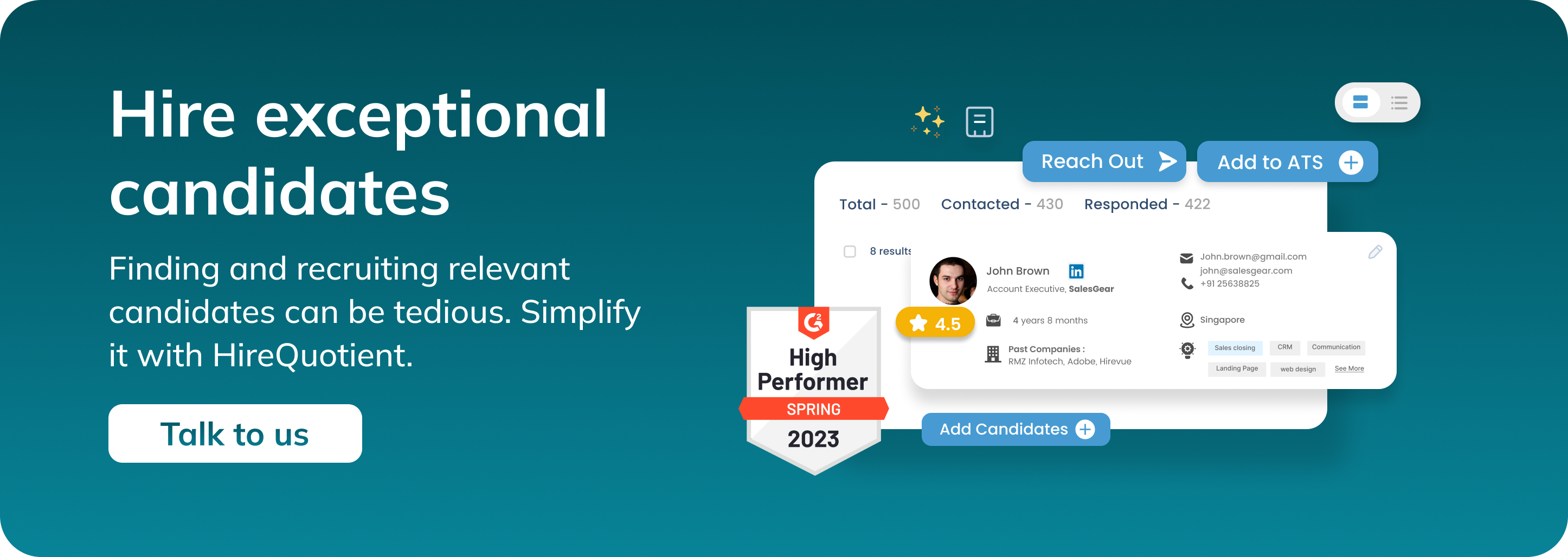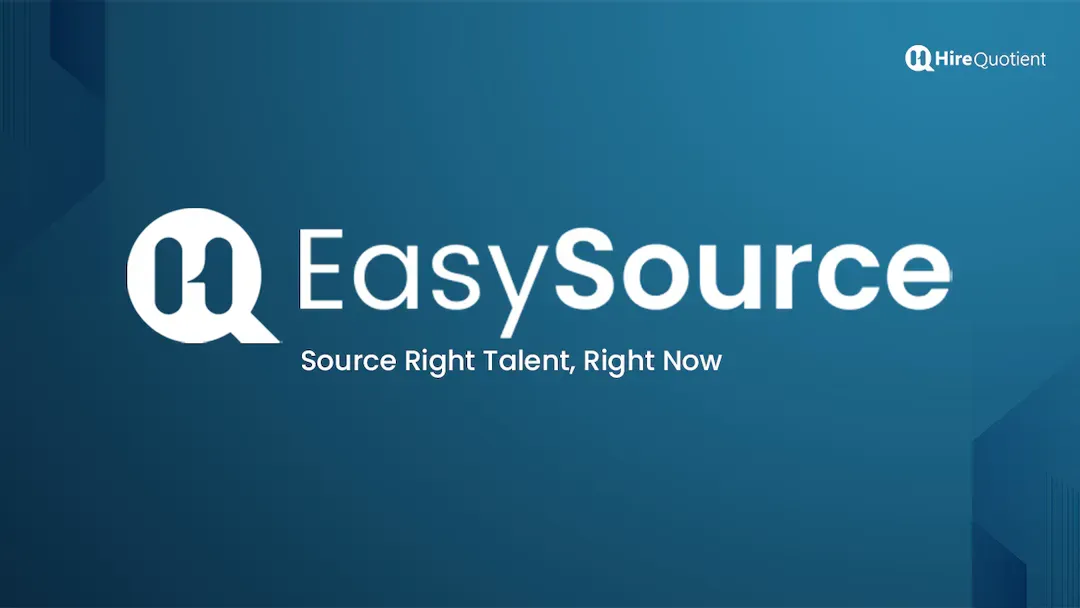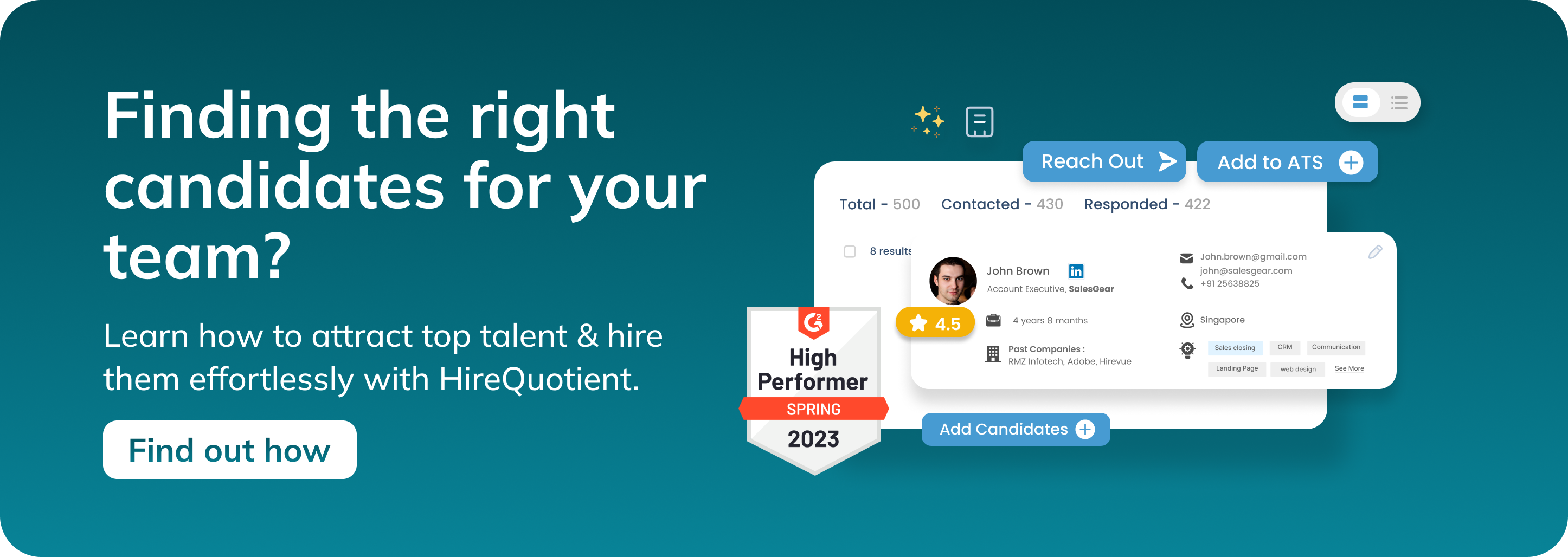What is Social Media Recruitment?
Social media recruitment strategy is a technique that combines employer branding with recruitment marketing to attract the top talent. Check out more about it here.
Did you land an employee from LinkedIn? Are you seeing job postings on Instagram, Facebook and Twitter? Is social media becoming a place for recruitment?
Social media recruitment is not a new trend anymore. It is one of the most commonly used talent acquisition tactics. Since most people use at least one social media platform, it makes sense to leverage these channels to attract and hire new job candidates.
What is social media recruitment?
Social media recruiting is a recruitment strategy that combines elements of employer branding and recruitment marketing to connect with and attract active and passive candidates on the digital platforms they frequent.
It takes much more than just advertising a position on your careers website and waiting for applications to flood in to attract the top people. You need to go where the best people congregate, which is social media these days. Here are some social media and recruitment data you should think about rather than just taking our word for it.
- An unbelievable number of 73% of millennials found their job via social media. And this trend is going to continue because a whopping 61 million Gen Z users will add to the workforce in the coming years and they maintain more than seven social media profiles.
- Not only that but 82% of companies attract passive candidates by recruiting through social media. And those companies using social media for recruiting reported a 50% increase in the quality of candidates.
Why social media recruitment?
Social media is a powerful tool for hiring. The employment process is sped up and shortened with social media recruiting. Businesses will automatically gain a competitive edge in getting the greatest employees as a result of this. On the social media accounts of your business, you can post job positions. Additionally, you can advertise the same in various forums and groups on social media.
Recruiters increasingly take into account a candidate's social media presence to get to know them better. On social media, they interact with these potential prospects and promote their talent brand. To assess candidates, they are leveraging social media information. Additionally, they are studying how these candidates behave on social media. They can use this to determine whether the candidate would be a perfect fit for their company.
Here are some noteworthy statistics about social media recruiting. These statistics will help you understand how social media has changed recruitment for many companies across the globe.
- 90% of Americans between 18 to 29 years old use social media. 82% of adults between 30-49 years old and 69% of adults between 50-65 years old are social media users.
- The average American spends 2 hours and 6 minutes on social media every day. The global average is 2.5 hours daily.
- 68% of millennials visit a company’s social media properties specifically to evaluate an employer’s brand.
- One in four job seekers (26%) say that diversity, equity, and inclusion messages published by employers would make them more likely to apply to that company.
- The percentage of college-educated users on LinkedIn (51%) is nearly equal to that on Instagram (49%).
Social media recruitment advantages and disadvantages
The many advantages of social media recruitment include:
1. Increases job visibility
These days, almost every qualified applicant you might take into consideration for any position at your firm is on social media. Over 2.19 billion people use Facebook regularly. The option to organize job search chats on Twitter is well-liked, and a large percentage of millennials and members of Generation X actively utilize LinkedIn as a forum for job searching.
Everywhere you turn, social networks are being used as excellent channels for finding and hiring great people. There aren't many other platforms that can reach as many people as social media, thus you are likely to find talent that other platforms can't even come close to matching.
2. Opens the door to engagement
Imagine a company that has patiently built its audience, but is now finding it difficult to interact with the followers it has attracted. An announcement of a job opportunity on social media can help a brand like this.
Your social media page receives greater interaction as interested people look for more details about the job opportunity. Others will share with their friends and followers, while others will send you a direct message to your mailbox. Some interested parties will post in the comments section.
These discussions keep your page alive and present you with a chance to interact with possible hires. Some of these are people who, if you had chosen another recruitment platform, would never have applied for a job at your company.
3. Allows you to target your vacancies
Social recruitment comes with the incredible ability to laser-target certain groups of people for the available vacancies. On LinkedIn for instance, you can try to share the job postings in certain industry-specific LinkedIn groups.
On this platform alone, there are thousands of groups for professionals in practically every industry you can imagine: from engineers to HR workers, to writers, to finance experts. That said, remember to post your recruitment messages in a way that would not be deemed annoying.
Social media recruitment ensures excellent reach for your job roles and helps you hire the best talent faster. Though social recruitment seems easy to get started with, here are some of the challenges that employers all around the world face when it comes to social media recruitment, such as
- Irrelevant or underqualified applicants
The majority of businesses believe that while social media recruiting ensures a great reach for the jobs, the quality of candidate applications suffers. They receive a lot of irrelevant or unqualified candidate applications.
The best approach towards this would be to focus on your target audience. You should write clear job descriptions stating the job requirements. Using an AI-powered tool that can screen the candidates and suggest the best-fit candidates for your job roles would be an excellent solution.
- Desired talent is not found
Social media's wide audience reach isn't always effective. Employers have occasionally received applications from all around the world without finding the local talent or the talent they were searching for.
An ideal approach to this social recruiting challenge would be to hire a distributed team across multiple locations. You could also provide relocation assistance if needed. Furthermore, you can also offer the hired candidates work-from-home opportunities.
- Ghosting applicants
Employers claim that when candidates were reached via social media, there were many no-shows for interviews. Additionally, they claim that when the candidates were approached via social media, there was improper communication.
You must realize that you require an effective communication strategy. You should speak with your candidates more frequently. Here, it would be a good idea to always keep them informed about the employment process.
- Fierce competition for talented professionals
There are many companies like yours out there looking for qualified employees because the hiring process is entirely candidate-centric. Like you, they are vying for the best talent.
The ideal strategy would be to establish your business as a brand. Your company's values, mission, and culture should all be represented in your employer brand. You may engage prospects with your brand by creating compelling job adverts. Your potential employees must understand exactly what it's like to work for you.
- No or low promotional budget
Many firms believe that advertising jobs on social media is an expensive endeavor. Ads are expensive and may not always result in the intended conversions.
By posting about your employment in numerous groups and forums, you may naturally market them on social media. By establishing employee recommendation programs and rewarding them, you can persuade your staff to spread the word about your company.
Benefits of using social media for recruitment
If you've ever wondered how to seek out new employees, there are many benefits to using social media for recruitment. The primary source of fresh job prospects and qualified job applicants, for certain organizations, is social networking. This is because social media recruiting helps recruiters and other talent acquisition specialists to more effectively identify and connect with their target audiences.
So let’s take a look into some of the main benefits of social recruiting.
1. Reach passive job seekers
Passive job seekers are people who are not actively looking for opportunities but would consider a better offer. These people don't search job boards or company career websites for available positions.
Employers must figure out ways to connect with both passive and active job seekers because the former is much more prevalent. The greatest method to achieve this is through social media! 80% of businesses claim that social recruitment helps them locate passive prospects, according to studies.
2. Hire high-quality candidates
Social media is one of the top sources of the highest-quality job candidates since it may reach both passive and active job candidates. 59% of recruiters ranked the applicants they found through social media as being of the "highest quality," according to research.
Recruiters can target extremely precise audiences with paid social media job postings and find candidates that fit their company culture. The ability to target candidates with specific knowledge, skills, experiences, and seniority levels helps recruiters weed out unnecessary applications and obtain higher-quality candidates.
3. Reduce time and cost per hire
Compared to recruiters who focus on other channels, those who use social media for hiring typically spend less money on finding new hires and filling positions more quickly.
For instance, using social media for advertising may be far less expensive than using employment boards. It brings in more qualified applicants, greatly speeding up the hiring process. Furthermore, in comparison to job boards, job adverts, recruiting firms, and recruiting events, job seekers find social media and professional networks to be the most helpful resources for their job hunt.
4. Showcase your employer's brand
Research indicates that 75% of applicants look up a company's reputation before applying for a position, and 62% of job seekers have reportedly used social media to assess a company's employer brand.
This is why social media is useful for recruiting purposes as well. Additionally, it is the best platform for employer branding because it allows businesses to highlight their current staff, organizational culture, values, benefits, and anything else that potential applicants might be interested in learning about before deciding to apply.
How do you use social media for recruitment?
Do not just post anything or hope users will spontaneously land on your job profiles. Make and follow a step-by-step plan. A sturdy social media recruitment process includes
1. Develop a strategy
Analyze your workforce planning and your targets. Consider how using social media to recruit employees can and should help you achieve these targets. Define these sub-targets precisely, ideally in terms of your KPIs.
Example: In July, we want to write to 50 people on LinkedIn via active sourcing. Our goal is for 5% of them to respond positively to our message.
Select suitable platforms where you will be able to reach your target groups. Take your internal resources into account and start with the platforms that promise the greatest success, such as LinkedIn.
2. Set up processes
A successful social media recruiting strategy requires a lot of participants who can work well together. So, right from the start, you must clarify questions such as:
- Who does what? Who is responsible for which decisions?
- How are you going to communicate directly with users?
- Who needs to approve which content?
Link your application processes directly to social networks, and if necessary, invest in new applicant management software. Throughout the process, candidates will expect the kind of quick and direct communication that they are used to from social media.
3. Define communication guidelines
Create clear guidelines on how your employees should communicate on social media in terms of language style, which words should or should not be used (“corporate wording”), and how candidates should be addressed.
It is particularly important that employees know how to react in critical situations: for example, if a user becomes insulting, tells lies about the company, or if a former employee complains about the company.
Remember that different platforms will require different styles of communication. You should probably address users differently on Facebook than on LinkedIn.
4. Actively involve your employees
Your employees are the best possible ambassadors for your company. They will speak positively about your company, recommend friends as new hires, and provide input for new content.
As part of your onboarding process, for example, you could explain to your employees how to maintain their profiles and communicate on social networks. Reward referrals or have your employees give testimonials for your recruiting campaigns.
Social media recruitment strategy
A social media recruitment strategy is a recruitment strategy that leverages social media platforms to promote your employer branding and attract active and passive candidates to your company.
The role of social media in recruitment is going upwards in the trajectory and we have listed out the steps that you can follow to build an effective social media recruiting strategy.
1. Build your presence on social media channels
Both job searchers and internet users seek out emotional connections. Businesses that adhere to the same morals and values as their customers are more likely to gain notice. Because of this, social media platforms are excellent places to establish your identity and presence.
Define what your brand stands for, since consumers prefer to work with businesses that they can relate to. Utilize social media as a platform to express your opinions while maintaining an industry-specific profile. Get the most engagement by presenting your brand in the best light.
2. Network with the right and diverse people
The subsequent stage after building a follower base is to network effectively. Avoid sending general messages to everyone. Make sure to tailor your message to each job seeker you speak with. Spend some time looking over their resumes and professional achievements to pique their interest. Include in your message what they can expect to receive in return for their contribution.
3. Get trending with hashtags
Hashtags are effective social media techniques that can significantly increase your reach. The challenge is finding the ones that job seekers utilize across various social media networks. To broaden your reach, you should search for a combination of general and sector-specific hashtags. It's crucial to locate hashtags that are both job- and industry-relevant. Create your own and make it a trend if you can't find any that are pertinent.
The reach of your message might quickly double by including a sufficient number of hashtags. However, keep in mind that using too many hashtags can cause your article to be flagged as spam. The correct combination of meaningful material and hashtags can shift the game. Make sure the content of your hashtag is interesting and relevant. Your hashtags should be innovative, quirky, and targeted if you want to expand your brand's reach and improve your recruiting strategies.
4. Speak, both business and fun
Your recruiting efforts don't have to be entirely dull or professional. Make your staff members active participants in your social media networks to increase your reach and prevent intimidating individuals.
Encourage and invite your staff to post pictures from the office, behind-the-scenes footage, or movies in which they discuss their careers. Potential employees will feel more at ease considering working with you in this scenario. Utilize social media to showcase the playful side of your workplace culture.
5. Be creative and proactive
You will connect with more candidates for employment if you take a more innovative approach to recruiting. Take advantage of the capabilities and tools available on social media. For instance, think about sharing entertaining, 2-3 minute videos that highlight how your company stands out from the competition or what you have to offer as a workspace. Instead of waiting for others to approach you, take the initiative and tell them what it's like to work with you.
Additionally, keep in mind that you must respond and process information more quickly. Respond to your applicants as soon as you can, and keep them informed of the progress of your hiring process. This will guarantee a positive applicant experience.
How do we measure the effectiveness of social media recruitment?
The overall goal of social recruiting is to build a large, high-quality talent pool. To ensure that you reach your goals, your company must first create goals against which you measure your success. Such plans may include:
- Increase traffic to your career site
- Increase engagement of Facebook Fans
- Increase follower count on Twitter
- Increase traffic to job postings
You can also measure how social recruiting directly impacts the bottom line by creating a report on:
- Top sources of hire
- Sources for high-performers
- Time to fill
- Cost per hire
Before you implement your social media strategy, start tracking key metrics on your current sourcing and recruiting efforts. Then, set goals that you would like to accomplish with social recruiting.
Top social media recruitment tools
There is no better place for recruiters to start when it comes to the talent battlefront than the main three dominating networking sites: Facebook, Twitter, and LinkedIn, each of which has a different set of engagement rules.
With approximately 2 billion members that log on every month, it is the biggest social networking site on the planet. Facebook has evolved the way job seekers connect with the companies they find intriguing, and because it is accessible to people of all ages, genders, and ethnicities, exposure to a varied pool of candidates is not a problem.
It's the ideal area to interact with job searchers, provide industry insights, and advertise all of your open positions because of the high user retention. Interestingly, Facebook provides employers with a "Job Openings" option directly from their profile, allowing job seekers to visit a single repository and instantly view what's available.
Twitter is a massive microblogging platform with a twist, with close to 310 million active users per month. All "tweets" are subject to a mandated character limit, so you must use the fewest words possible without diluting your point. Although it might not seem so, it's much tougher than you think to sell your company's brand in 140 characters or fewer.
You can build "Twitter Cards" with your social recruiting tool to add high-quality images, videos, and other media to your tweets and give them more impact with more expressive content.
LinkedIn, which is regarded as the largest professional network in the world and the most popular social media platform for recruiting, is used as a crucial screening tool and is where the majority of candidates find their next position. Your business may effortlessly maintain a high-profile relationship with both active and passive prospects thanks to a broad network of valuable contacts.
Through social distribution, which automatically posts job postings on their profiles for more exposure and encourages internal recommendation systems, you may even look for internal promotions.
While the big three above may seem obvious, the following sites may not be a top-of-mind concern for recruiters, but progressive recruiting means finding candidates off the well-worn path.
YouTube
YouTube allows you to broadcast your brand because it stands out from the other members of our list with its video-only approach. Compared to text and images combined, social video generates 1200% higher social shares.
That’s not a typo, and it exemplifies the value of producing employee and culture-focused recruiting videos regularly. With over a billion active users, there’s no better place to have real employees speak to company culture and shed details on what it’s like to work there.
Google+
Google + is one of the less often used recruiting social networks, where jobs are frequently shared, and it offers several advantages over other services. For starters, it has a built-in talent pool tool called Circles that enables recruiters to make private groups with prospects from pertinent industries and tailor certain content toward them.
Given that it is supported by the most powerful search engine in the world, it is also excellent for SEO and gives your company a ton of visibility related to the keywords you identify.
A picture is worth a thousand words, but recruiters also value images and they believe Instagram to be the cradle of millennial "purple squirrels". Instagram is a very engaging way to market your business with photographs, videos, and text captions while appealing to the young generation of job searchers, boasting the second-highest penetration rate in social media among this coveted demographic.
Winning the talent battle is no easy task, but with the greatest tools at your disposal, finding your next great hiring is as easy as updating your status.
How EasySource Enhances Social Media Recruitment
EasySource isn't just a candidate sourcing tool; it's a comprehensive solution designed to streamline every aspect of your recruitment process, including social media recruitment. Here's how EasySource can help you leverage social media platforms to attract and hire top talent:
1. Efficient Candidate Sourcing: EasySource integrates with popular social media platforms like LinkedIn, Facebook, and Twitter, allowing you to seamlessly source candidates directly from these networks. With EasySource's advanced algorithms, you can identify and connect with both active and passive candidates who match your job requirements, expanding your talent pool with minimal effort.
2. Targeted Candidate Engagement: EasySource's candidate engagement module enables you to craft personalized messages and outreach campaigns tailored to candidates on social media. Whether you're reaching out to potential candidates or responding to inquiries, EasySource ensures that your communication is timely, relevant, and engaging, increasing the likelihood of a positive response.
3. Data-Driven Insights: EasySource provides valuable insights and analytics on the performance of your social media recruitment efforts. Track metrics such as candidate response rates, engagement levels, and source effectiveness to optimize your strategies and maximize your ROI. With EasySource's reporting capabilities, you can make informed decisions and continuously improve your social media recruitment efforts.
4. Seamless Integration: EasySource seamlessly integrates with your existing social media accounts and recruiting tools, eliminating the need for manual data entry and streamlining your workflow. Whether you're posting job openings, engaging with candidates, or analyzing performance metrics, EasySource ensures that your social media recruitment efforts are efficient and effective.
5. Compliance and Security: EasySource prioritizes compliance and data security, ensuring that your social media recruitment activities comply with relevant regulations and best practices. With built-in features such as data encryption, access controls, and audit trails, EasySource provides peace of mind that your sensitive recruiting data is protected at all times.

By leveraging EasySource for social media recruitment, you can reach a wider audience, engage with candidates more effectively, and ultimately hire top talent faster and more efficiently than ever before. With EasySource as your recruitment partner, you can stay ahead in the competitive landscape of social media recruitment.
Wrapping up
Social media recruiting lets you showcase your company culture, reach a larger talent pool, and connect with your ideal candidates. As Gen Z and Millennials make up more and more of the workforce, social media will only become more valuable for recruiters.
Are your ideal candidates on social media? Then your recruiting efforts should be, too.
Do share your best ideas for social media recruitment with us.



